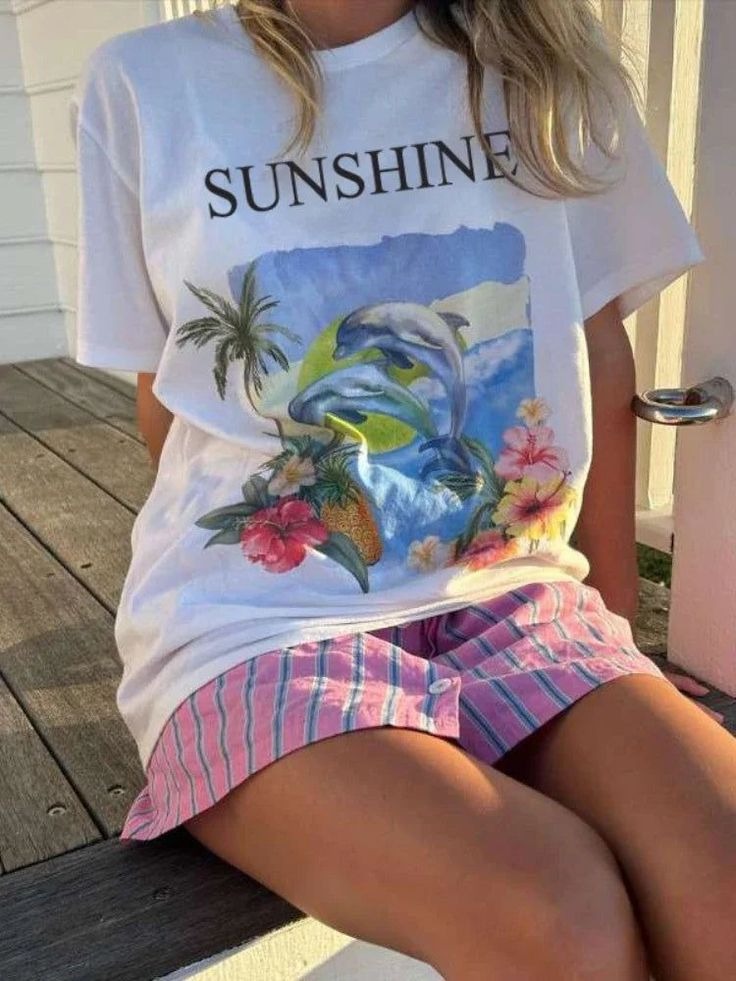Introduction
At once the simplest and most profound of garments, the t-shirt traces a trajectory that spans industrial revolutions and digital dawns, grassroots activism and haute-couture runways. Its elemental form—a seamless knit tube shaped into torso and sleeves, crowned by a soft, collarless neckline—has persisted for more than a century. Yet within that enduring silhouette lie layers of meaning and countless innovations in fiber science, graphic communication, and ethical practice. In this encyclopedic account, we shall traverse every dimension of the t-shirt’s saga: from its subterranean birth beneath factory floors to its proclamation on global stages, from mass-production imperatives to bespoke artisan revivals, and from physical wardrobe staple to avatar attire in the metaverse. In charting this infinite odyssey, we reveal how a simple garment became a barometer of societal change, a laboratory for technological breakthroughs, and a canvas for human expression without end.
I. Industrial Incubation: The Underlayer Emerges (Late 19th–Early 20th Century)
The t-shirt’s genesis is inseparable from the crucible of the Industrial Revolution. By the 1880s, mechanized mills in Lancashire and New England were churning out yards of woven cotton and wool—materials ill-suited to the heat and exertion of factory work. Tailors and laborers experimented with Jersey-knit cotton—already used for undergarments—extricating collars and cuffs to create pull-over shirts that clung like a second skin. Key technologies emerged in tandem: circular knitting machines produced seamless tubes of fabric, while mercerization enhanced cotton’s luster, tensile strength, and dye affinity. Though strictly hidden beneath waistcoats and overalls, these early prototypes codified the t-shirt’s core attributes: breathability, stretch, minimal seaming, and rapid drying.
II. Military Catalysts: From Ship Decks to Home Fronts (1914–1945)
World War I elevated the t-shirt from private underlayer to military issued kit. Sailors stationed in tropical theaters replaced wool tunics with short-sleeved cotton jerseys—light, quick-drying, and comfortable under breezes at sea. On European fronts, tank crews and pilots tucked cotton-blend shirts beneath leather and metal, relying on their moisture-wicking capacity. Post-Armistice surplus undershirts—sold cheaply to civilians—seeded everyday wardrobes. World War II doubled down: governments in Allied and Axis powers standardized cotton and rayon blends, repurposed textile mills for military needs, and, upon victory, redistributed surplus stocks via relief programs. By 1945 the t-shirt was no longer clandestine—it was a universal staple across continents.
III. The Graphic Renaissance: Advertising, Activism, and Art (1950s–1970s)
In the postwar economic boom, blank white t-shirts morphed into ambulatory billboards. Local merchants, collegiate sports teams, and political organizations commissioned screen-printed logos and slogans. Urban print shops sprouted, democratizing design through stencils, emulsions, and squeegees. By the late 1960s, graphics transcended commerce: civil-rights activists, anti-war protesters, and environmental advocates emblazoned shirts with potent messages, turning wearers into walking pamphlets. Simultaneously, rock bands and festival-goers transformed the t-shirt into coveted memorabilia—tour dates, album art, and psychedelic swirls became badges of belonging. Artists experimented with tie-dye, discharge inks, and hand-cut linocuts, merging craft and counterculture.
IV. Subcultural Codices: Surf, Skate, Punk, and Hip-Hop (1970s–1990s)
As the t-shirt’s graphic potential blossomed, subcultures co-opted it to forge distinct visual languages. West Coast surfers favored loose weaves emblazoned with wave motifs; East Coast skateboarders adopted oversized cuts and graffiti-inspired tags; punk rockers ripped necklines, safety-pinned seams, and spliced xeroxed flyers into DIY statements; hip-hop crews emblazoned baggy shirts with bold logos—FUBU, Karl Kani, Tommy Hilfiger—asserting urban identity and entrepreneurial pride. These movements blurred the line between garment and manifesto, embedding subcultural codes into cotton knit.
V. Global Threads: Regional Inflections and Cultural Hybrids
Though its shape endures, the t-shirt has absorbed a kaleidoscope of cultural aesthetics. In West Africa, vibrant wax-print textiles are repurposed into panelled tees celebrating ancestral motifs. South Asia’s block-printing villages stamp neutral knits with indigo and vegetable dyes in paisley, elephant, and mythic patterns. Japanese labels channel wabi-sabi through uneven indigo shibori, hand-stitch distressing, and asymmetrical hems. Scandinavian minimalists champion organic linen-cotton weaves in muted palettes, emphasizing texture and drape over decoration. Latin America electrifies tees with street-art stencils and political slogans, while indigenous designers worldwide fuse traditional embroidery with modern silhouettes. Each region reinterprets the t-shirt as a vessel of heritage and innovation.
VI. Engineering Excellence: Fibers, Fit, and Fabrication
Beneath its surface, the t-shirt has been a crucible of material science. Long-staple cottons (Pima, Supima) yield buttery-soft, high-strength yarns; blends with lyocell, bamboo viscose, and recycled polyester deliver moisture management, antimicrobial properties, and sustainability. Seamless knitting technology sculpts single-piece torsos, eliminating side seams and reducing fabric waste. Laser cutters and ultrasonic bonding create precision hems and openings without thread, enhancing durability and reducing microplastic shedding. Advances in 3D body scanning and parametric patterning promise made-to-measure fits, potentially rendering size charts obsolete. Meanwhile, digital direct-to-garment printers reproduce infinite color gradients and photographic detail—no screen, no minimums, no design limits.
VII. The Global Economy of the T-Shirt: Supply Chains and Market Forces
Each year, an estimated seven billion t-shirts roll off production lines—in Bangladesh, Vietnam, Turkey, Central America—driving a global market nearing one hundred billion dollars. Brands juggle lead times, raw-material costs, tariff shifts, and labor standards, often pursuing near-shoring to Mexico or Eastern Europe to mitigate risks. Fast-fashion conglomerates compress concept-to-rack cycles to weeks; direct-to-consumer startups customize prints on demand; flash-sale platforms scour warehouses for markdown volumes; streetwear drops generate hype that bellows through resale markets, elevating rare pieces into collectible icons. This frenetic ecosystem rewards speed and novelty but strains ethical and environmental boundaries.
VIII. Ethical Reckoning and Circular Imperatives
The t-shirt epitomizes the fast-fashion paradox: ubiquitous comfort with a costly footprint. Conventional cotton cultivation guzzles water—up to 2,700 liters per kilogram of fiber—and relies on pesticides that imperil ecosystems and agrarian communities. Dyehouses discharge heavy metals and surfactants into waterways; microfibers released in washing machines infiltrate oceans. Garment overproduction and disposability fuel landfills; many tees are worn fewer than twenty times before discard. In response, stakeholders champion regenerative agriculture—cover-crop rotations to rebuild soil health—closed-loop water systems, and zero-liquid discharge technologies. Brands seek GOTS, Fair Trade, and BCI certifications; innovators prototype chemical and mechanical recycling to regenerate yarns; rental, resale, and take-back platforms extend product lifespans. Yet true circularity demands consumer buy-in, policy incentives, and radical redesign of value chains.
IX. Democratization and the Maker Ethos
Even as factories churn out volumes, the t-shirt remains an artisan’s canvas. Desktop DTG printers empower home-based microbrands; makerspaces host screen-printing co-ops and teach specialty techniques—discharge, foil, puff inks. Augmented-reality configurators let customers preview, rotate, and recolor graphics in real time. Crowd-funded runs produce niche campaigns for nonprofits, community sports, and pop-up events. In these bottom-up ecosystems, the t-shirt reclaims its democratic roots: a medium accessible to anyone with a design idea and a heat press.
X. Psychology of Cotton: Enclothed Cognition and Social Signaling
Psychologists observe “enclothed cognition”—the phenomenon by which garments influence mental state and behavior. A political message tee can heighten wearer empowerment; team shirts foster group cohesion; celebrity merch activates parasocial bonds. On protest lines, uniform t-shirt colors and graphics project solidarity and amplify collective voices. In workplaces, logoed tees reinforce corporate identity while casual comfort boosts creativity. The t-shirt’s proximity to the skin grants it an intimacy unmatched by structured attire, enabling it to operate simultaneously as personal armor and public billboard.
XI. Digital Doubles: The T-Shirt in Virtual and Augmented Realities
As life migrates online, the t-shirt follows. In video games and virtual worlds, avatars sport branded tees and fantasy-logo shirts, blending real-world IP with digital fantasy. Brands issue NFTs of virtual wearables—sometimes bundled with physical shirts—creating scarcity economies in the metaverse. Augmented-reality apps let shoppers “try on” virtual graphics, share snapshots, and purchase instantly. Virtual pop-ups host charity drops and influencer events in decentralized platforms, mirroring streetwear hype cycles. Blockchain-based provenance systems promise to trace every fiber, dye lot, and stitch in immutable ledgers—offering radical transparency from seed to sale.
XII. The Smart Shirt Horizon: Sensors, Actuators, and Responsive Design
The next frontier lies in smart textiles. Conductive yarns—silver-coated nylon, carbon nanotube composites—can embed biometric sensors that track heart rate, respiration, and movement, piping data wirelessly to health apps. Photochromic inks shift hue under UV light; thermochromic pigments respond to body heat, animating graphics in real time. Integrated haptic modules could deliver navigational prompts or notification pulses. Biotechnology labs cultivate cellulose fibers in bioreactors—bypassing farmland—while microfactory robotics and additive manufacturing promise hyper-local, on-demand production with near-zero waste. The t-shirt, thus, evolves from passive garment to living interface.
XIII. Navigating Tomorrow: Collaboration, Regulation, and Conscious Consumption
Despite dazzling innovations, challenges persist. Data privacy and security for sensor-laden shirts demand new standards and legislation. Scaling regenerative and circular processes hinges on blended finance, public-private partnerships, and policy incentives that internalize environmental costs. Cultivating consumer mindsets toward durability and repair requires transparency in labeling, deposit-return schemes, and educational campaigns. Brands, artisans, technologists, and policymakers must coalesce into cross-sector alliances to reimagine the t-shirt as an exemplar of ethical commerce and creative expression.
Conclusion
From its shadowy origins under factory overalls to its luminous future as a smart, circular, and virtual wardrobe staple, the t-shirt remains the most democratic and adaptable garment yet conceived. Each fiber and print carries traces of labor and artistry; each sensor and pixel promises new interfaces between body, data, and identity. As we navigate the urgent imperatives of environmental stewardship, social equity, and digital immersion, the t-shirt stands as both mirror and map—reflecting our collective past while charting pathways toward a more conscious, connected, and creative future. In its infinite iterations, the t-shirt endures: a simple garment that tells an unending story.




Leave a comment